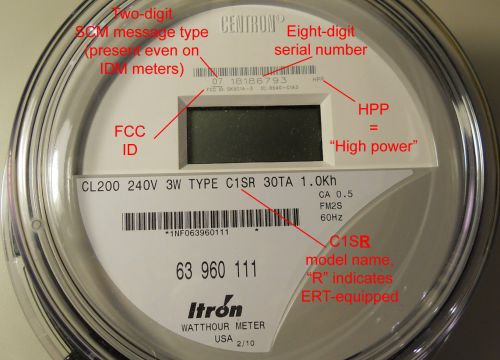
Itron ERT (Encoder Receiver Transmitter) protocol types are technologies used to collect and send data from utility meters to utility companies. These protocols are a key part of how utilities such as water, electricity, and gas are tracked, measured, and billed. In this article, we will explore what Itron ERT protocols are, the different types available, and how they make utility management easier and more efficient.
What Is the Itron ERT Protocol?
The Itron ERT protocol is a system that allows utility meters to send data wirelessly. This radio protocol helps gather important consumption data from water, gas, or electric meters, and then transmits it to the utility company for processing. This method eliminates the need for manual meter reading, making the entire process more accurate and efficient.
Main Types of Itron ERT Protocols
Itron ERT protocols come in different types, each serving different needs based on the utility and the environment. Here are some of the most common itron ert protocol types:
1. Standard Consumption Message (SCM) Protocol
The Standard Consumption Message (SCM) protocol is one of the most commonly used ERT protocols. It is used to send basic information about meter usage, like the total amount of water, gas, or electricity used during a specific period.
Features of SCM Protocol:
- Sends basic data about consumption data in a simple format.
- Great for utilities that only need the total amount of usage.
- Uses very little power, which helps save battery life on the devices that send data.
- Commonly used for meter reading in residential and commercial settings.
SCM is ideal when detailed data isn’t necessary, making it cost-effective and efficient for many utilities.
2. Interval Data Message (IDM) Protocol
The Interval Data Message (IDM) protocol provides more detailed information than the SCM. It breaks down consumption data into smaller chunks by recording meter usage at regular intervals, like hourly or daily.
Features of IDM Protocol:
- Provides detailed usage data by breaking it down into smaller intervals, such as hourly or daily.
- Helps utilities spot patterns in energy usage, like identifying when customers use the most electricity.
- Useful for managing demand-response programs, where customers are encouraged to reduce usage during peak times.
- Helpful for detecting issues such as leaks or equipment problems.
IDM is perfect for utilities looking to gather more detailed data and better understand their customers’ consumption patterns.
3. High-Power Output Protocol
The High-Power Output protocol is used in situations where the standard signal strength might not be enough. This protocol sends data with more power, ensuring that the signal can travel over longer distances or through tougher environments.
Features of High-Power Output Protocol:
- Provides a stronger signal, useful for difficult-to-reach locations, like remote or rural areas.
- Great for urban areas with dense buildings where signals may be blocked or weakened.
- Improves communication reliability even in areas with a lot of interference.
This protocol ensures that the data gets transmitted correctly, even in challenging conditions, making it an important tool for utilities working in tough environments.
4. Mobile Read Protocol
The Mobile Read protocol allows utility workers to gather data while on the move. This is especially useful for “drive-by” meter reading, where workers use a vehicle to collect data from meters as they drive by.
Features of Mobile Read Protocol:
- Enables quick collection of meter reading data without stopping to manually check each meter.
- Increases the efficiency of meter reading, allowing utility companies to gather data from hundreds or thousands of meters in a short amount of time.
- Reduces human error by automating the process, ensuring more accurate readings.
Mobile Read is ideal for utility companies that need to read large numbers of meters quickly and efficiently.
How Itron ERT Protocols Benefit Utilities
1. Accurate Meter Reading and Billing
Itron ERT protocols make it easier for utility companies to gather accurate data. This reduces errors from manual readings and ensures that customers are billed correctly based on their actual consumption data.
2. Efficiency and Time-Saving
With wireless data transmission, utility workers no longer need to go to each meter manually. This saves time and allows utility companies to manage their operations more effectively.
3. Reduced Costs
Automating the meter reading process with Itron ERT protocols means fewer employees are needed to gather data, which can significantly lower operational costs. Additionally, it reduces the chances of human error that could lead to expensive billing mistakes.
4. Better Customer Service
Since the readings are more accurate and timely, customers are less likely to face issues with overbilling or underbilling. This leads to better customer satisfaction and trust in the utility company.
The Future of Itron ERT Protocols
Itron is continuously working on improving their protocols to keep up with the increasing demand for smart grid technologies. With smart cities becoming more common and the rise of the Internet of Things (IoT), the need for advanced data collection and analysis will only grow. As technology improves, Itron ERT protocols will continue to evolve, offering even better communication, faster data transmission, and enhanced customer service.
Conclusion
Itron ERT protocols are essential for modern utility management. By automating the process of meter reading and providing accurate consumption data, they help utilities save time and money while improving accuracy. Whether it’s the simplicity of the Standard Consumption Message, the detailed insights provided by Interval Data Messages, or the extended range of High-Power Output Protocols, Itron offers a wide range of solutions to meet the needs of any utility.
With Itron ERT protocols, utilities can improve their operations, reduce costs, and enhance customer satisfaction. As the future of utility management moves towards smarter technologies, these protocols will continue to play a vital role in the smooth running of utility systems around the world.